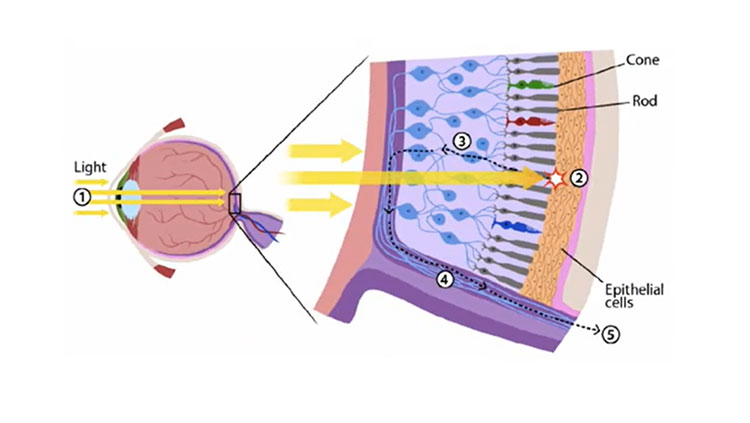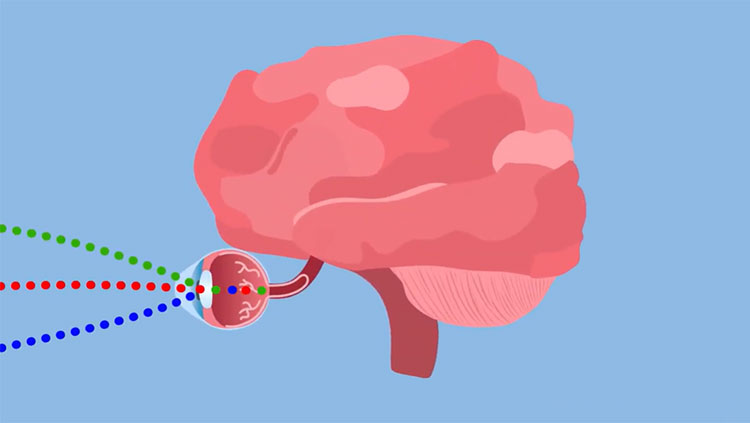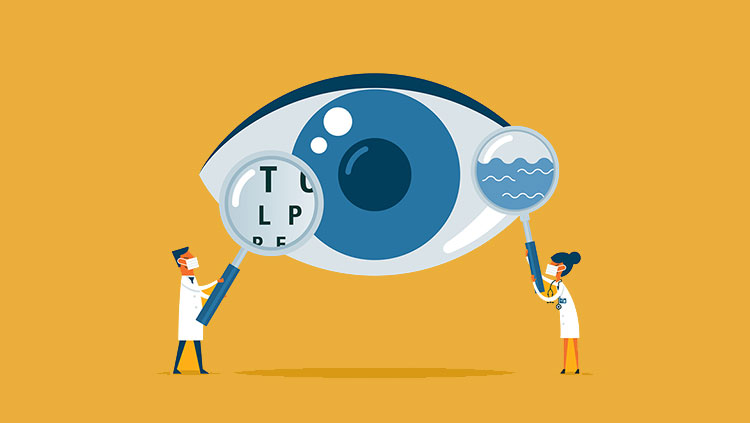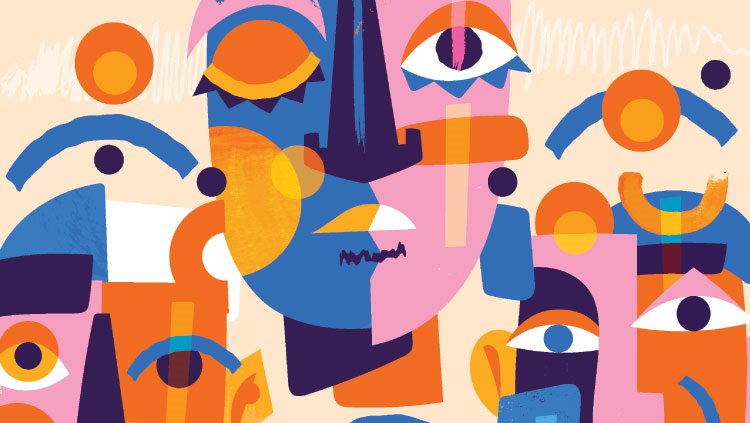How accurately do your eyes see the world? You instinctively know that your eyes are powerful tools. They allow you to recognize three-dimensional objects, notice small movements, and appreciate fine details from a distance. But your eyes can be deceived. What happens to your perception of this gray bar when it is give a new background? While the bar is still the same solid shade of gray, it appears darker on one side and lighter on the other. If it seems strange that your eyes can be tricked by such a simple illusion, rest assured. This is not a flaw in your vision, but the product of a feature that is very useful in the real world. Let’s look at how this illusion works. Light reflecting off it enters your eye and is projected as an image on the retina. The retina is made up of photoreceptors that respond to light like the pixels of a digital camera. These photoreceptors are grouped into receptive fields. Each one is attached to a ganglion cell which generates signals that travel to the brain. The frequency of the signals tells the brain how light or dark the area perceived by the receptive field is. A medium shade elicits a medium response, a dark shade elicits a weak response, and a light shade elicits a strong response. But contrasting shades within the receptive field change the signals in an interesting way. You might expect a darker shade at the edge of the field to weaken the signal. It actually does the opposite - increasing the signal’s frequency so the brain perceives the gray shade as lighter than it really is. A lighter shade at the edge of the field decreases the signal’s frequency and makes the gray appear darker. This function increases the contrast between the two shades. Your brain receives all these signals and pieces them together to generate this image. Because the ganglion cells are signaling at different rates along the gray bar, you mistakenly perceive it as a gradient from light to dark. This feature of your vision comes in handy in the real world, like when you are walking through the woods. When you are moving through the world, you need to be able to recognize objects in your path so you can avoid them. Fortunately, your eyes increase contrast so the edges of objects are easier to see. So while your eyes might not show you the world exactly as it is, they do something even better. They highlight the most important features of your environment so that you can best respond to them.

















